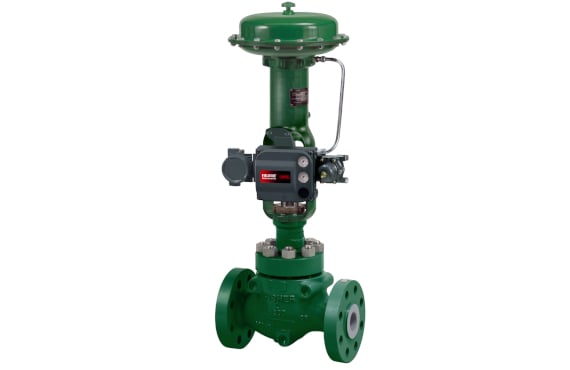
Maximize Power Financial Savings and Convenience With Advanced Building Automation Controls
In the realm of modern-day architecture and facility management, the combination of innovative building automation regulates stands as an essential advancement. By using the power of automation, buildings can adapt, respond, and progress in methods that were once unbelievable.
Power Efficiency Perks
Power efficiency benefits can substantially minimize energy consumption and operational costs in structures. Energy-efficient systems, such as innovative building automation controls, can enhance the usage of sources like cooling, lights, and home heating, leading to reduced energy expenditures over time.
Moreover, enhanced energy efficiency can lengthen the lifespan of building tools and systems. By running more successfully, cooling and heating systems, lighting components, and other building elements experience much less deterioration, causing reduced upkeep and replacement costs. Additionally, energy-efficient buildings frequently regulate greater home values and rental prices, giving long-lasting monetary benefits to owners.
Additionally, power efficiency can improve resident convenience and performance. Appropriately regulated interior atmospheres with ideal lights and thermal problems produce a more favorable and pleasurable work space, leading to enhanced worker contentment and efficiency. Generally, the power efficiency benefits connected with sophisticated building automation controls are complex, including price financial savings, environmental stewardship, and resident well-being.
Improved Comfort Control
Enhancing comfort control in structure settings needs a sophisticated integration of advanced automation systems for ideal resident well-being. By using innovative structure automation controls, facilities can tailor the interior setting to meet the specific demands and preferences of residents. These systems make it possible for exact policy of air flow, illumination, and temperature, creating a comfortable and efficient ambience. Owner contentment and productivity are closely linked to thermal convenience, making it necessary to have systems in place that can adjust to transforming conditions in real-time.
Boosted convenience control surpasses fundamental temperature modifications. It includes functions such as personalized settings, occupancy sensors, and natural light application to produce a dynamic and receptive atmosphere. By including these innovative controls, structures can not just improve convenience yet additionally improve power effectiveness by maximizing system procedures based upon actual occupancy and use patterns. Ultimately, focusing on passenger comfort with innovative automation systems brings about a more satisfying and much healthier interior setting.
Operational Efficiency Improvements

Additionally, the execution of real-time tracking and analytics devices official source allows building operators to determine energy inefficiencies and functional abnormalities promptly. By continuously keeping track of power usage patterns and system efficiency metrics, adjustments can be made in real-time to enhance energy usage and make sure peak functional efficiency. control valves. Furthermore, including need reaction techniques right into building automation controls can further enhance operational efficiency by dynamically changing energy use based on grid problems and pricing signals
Indoor Climate Optimization
Efficient interior climate optimization is an essential element of structure automation controls, making certain passengers' comfort and health while making best use of home power savings. By making use of sophisticated sensors and controls, building automation systems can constantly monitor and adjust temperature, humidity degrees, air try these out high quality, and ventilation to produce an optimal indoor atmosphere. Keeping comfortable and constant problems not just improves occupant fulfillment yet likewise improves productivity and overall health.
Interior environment optimization likewise plays an essential duty in energy performance. By fine-tuning heating, ventilation, and cooling systems based on real-time information and occupancy patterns, constructing automation controls can significantly minimize power consumption - control valves. For circumstances, executing techniques such as demand-controlled ventilation and thermal zoning can aid minimize energy waste while guaranteeing that each area of the structure obtains the needed conditioning.

Sustainable Atmosphere Creation
Building automation regulates not just maximize interior climate conditions for power efficiency and resident comfort however additionally lay the structure for producing a lasting environment through tactical management of sources and systems. By incorporating advanced structure automation innovations, such as sensors, actuators, and intelligent software program, facilities can keep an eye on and readjust power use in real-time to reduce waste and reduce their carbon impact. These systems enable predictive upkeep, determining potential problems before they rise and optimizing equipment performance to enhance durability and effectiveness.
In addition, lasting environment development prolongs beyond energy management to include water conservation, waste decrease, and interior air quality renovation. Structure automation controls can control water usage, find leakages, and ensure appropriate waste disposal techniques, adding to overall sustainability initiatives. Furthermore, by keeping track of and regulating ventilation and filtering systems, these modern technologies enhance passenger health and wellness and performance while lowering power consumption connected with a/c procedures.
Verdict
To conclude, progressed building automation manages offer significant benefits in terms of power savings, comfort control, functional efficiency, interior environment optimization, and creating a lasting setting. By carrying out these controls, structures can accomplish ideal efficiency while reducing energy usage and boosting owner comfort. It is apparent that making use of innovative automation innovation is critical in enhancing building efficiency and creating a much more sustainable future.
Power efficiency advantages can considerably reduce power intake and functional prices in buildings. Generally, the energy efficiency benefits connected with innovative building automation controls are complex, including expense savings, ecological stewardship, and occupant health.
Furthermore, including demand response approaches into structure automation controls can even more enhance functional performance by dynamically changing power use based on grid conditions and prices signals.
Building automation manages not just maximize indoor environment problems for power performance and occupant convenience yet also lay the foundation for producing a lasting atmosphere with strategic management of systems and resources.In verdict, advanced building automation controls deal substantial advantages in terms of power financial savings, comfort control, operational efficiency, indoor environment optimization, and developing a lasting environment.